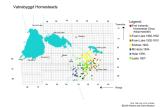1
Regions Within the Vatnabyggd Settlement
9 December 2005
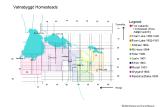
2
The distinction between the first and second settlement periods is mostly arbitrary, as settlers continued to come from Thingvalla as well as other areas. The most indicative marker is the volume of settlement that began about 1903 and brought settlers from other Canadian Icelandic communities as well as from the States and Iceland.
3
From 1904 until the rail line came to Foam Lake in 1907, many of the settlers came to Wadena by rail and traveled south to their homesteads.
4
Settlement spread rapidly from Foam Lake to Dafoe. Icelandic settlers moved into Kristnes and Leslie areas starting about 1903, and by 1905 Icelanders were taking out homesteads in the Kandahar-Dafoe area. Vatnabyggðin (Lakes Settlement) by 1910 was well on its way to becoming the largest Icelandic community outside Iceland, in both area and population. The Canada Census of 1911 records 1684 inhabitants of Icelandic origin (this does not include children with an Icelandic mother but father of different nationality; the children were considered to have the nationality of their father). The total population of the region was recorded as 4182. Icelanders comprised nearly 50% of the population in the Vatnabyggd settlement.
5
To get an idea of how thickly the area was settled by Icelanders, these maps show homestead locations of Icelanders who came to the area. Approximately 600 homesteads are mapped, colour-coded by area. Heavy lines represent township boundaries; lighter lines represent section boundaries. Quarter sections are not indicated except by a coloured square which represents land farmed by a homesteader.
6
Foam Lake Settlement Homesteaders 1900 to 1910
9 December 2005
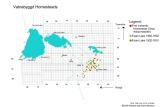
7
Helgi Sigurdson, Christjan Helgason's father, filed on a fraction of NW34-31-12W2, but had to abandon it in 1902 as Foam Lake was very high at that time, and probably covered most of the quarter. Nevertheless, he was able to fulfill the homestead requirements and a patent was granted in 1907. The land location, described as Fr NW34-31-12W2, indicates that only a fraction of the quarter was available to homestead, probably because Foam Lake covered a portion of the quarter during the land survey
8
Vatnabyggd Homesteads Foam Lake to Kristnes
9 December 2005
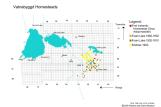
9
Christjan Helgason seems to have been a very influential member of the community. His name appears in several homestead files from the area. He served as executor for Paul Gunnarson's estate and filed a posthumous application for patent. Gunnarson built his house in June 1909 and began his residence in that month; on August 25, 1909, he passed away while in residence on the homestead. His will left his homestead to his adopted daughter Adalborg, on whose behalf Helgason was filing. The patent was granted in 1912.
10
Vatnabyggd Homesteads Foam Lake to Mt. Hecla
9 December 2005
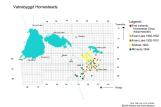
11
Sveinn Eirikson of SW14-32-11W2 requested an extension on his grant due to loss of use of his hand. He injured his hand in March (1905) while working off his tax debt; he got 'blood poisoning' and the index finger of his right hand had to amputated. He spent a month in Yorkton hospital. By the date of the Statutory Declaration accompanying his request (Sept 15, 1904), he had not yet recovered the use of his hand. At this time he had a wife and nine children to support. Not too surprising that he had to work off his taxes in lieu of payment.
12
Vatnabyggd Homesteads Foam Lake to Holar
9 December 2005
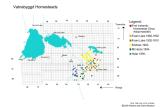
13
The animals often had more room than the people. One homesteader, who had a wife and 4 children, built a 22'x18' house, and a 42'x48' stable. He also had a second stable 24'x 16'. Another homesteader, along with his wife and 5 children, lived in a tent while building his house.
14
Vatnabyggd Homesteads Foam Lake to Leslie
9 December 2005
